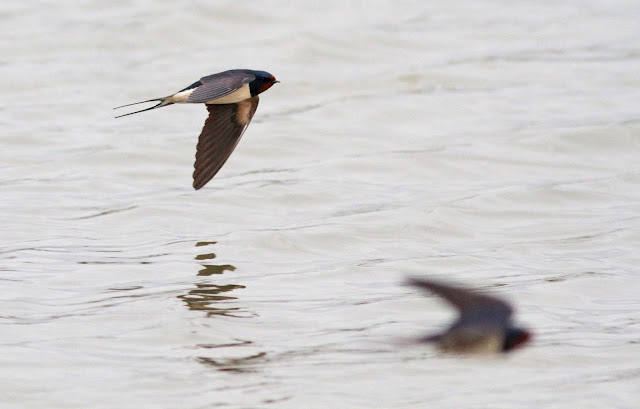This article (here) appeared on Inside Croydon over the weekend, put together from comments that were part of an ironic post from my personal facebook page. On writing up the annual report for 2015 I had got to the part where Viridor had taken the bird group's keys away and thought it would be amusing to add some dramatic narrative to that to see whether it would get past the Viridor proof reading so I shared that narrative on facebook with my friends. Next thing I know the narrative is part of the article above, the site ecologist is on the phone and I ended up meeting the Viridor managers yesterday, in a field!
Funny old game this. The comments are actually true as of December 2015 (as that was the events I was reporting on - the December 2015 conservation update) and the concerns about the reasons for the group being downsized from 30 keys to 15 were/are genuine concerns.
However since 2015 there has been some progress with the situation and part of that progress has been a response to some of the negative press that Viridor have been receiving, much of it from our side of things robustly supported with to up to date empirical evidence to support any comments. So the importance of accurate reporting in the local media is needless to say critical in the process of working towards positive results for the nature reserve and the local community via the democratic process.
Since December 2015, Viridor have started the ball rolling on various initiatives to move forward with the restoration in order to address the serious decline in the biodiversity and also initiatives to increase public engagement on the site. This involves working closer with not only our local bird and wildlife group but also with the regional conservation NGO's, getting in additional expertise to overview some of the conservation and restoration plans, allocating additional keys to active members (as opposed to the problem we have had in the past with keys being allocated to people who can't commit to the constant effort that keyholders are responsible for) and organising more public events for the local community.
I personally would like to see the development of the habitats and employment of a warden as soon as possible to oversee the daily maintenance work on the reserve with an essential core working green team and additional volunteers (and also work experience and training opportunities) and working towards steadily increasing public access (as the site is still a working site) for more more naturalists and welcoming schools for educational visits, universities for research, the public for wildlife watching and recreation, health organisations for health activities (tackling health problems such as obesity through walking and cycling and also all the health benefits of building communities and individuals engaging with nature), ramblers, families etc etc. To achieve that objective adequate facilities are required, a visitors centre and the necessary reserve infrastructure. As this is no mean task, the engagement of some of the regional conservation organisations and key stakeholders will be essential in developing a flagship reserve, a reserve that due to the community model that it is being developed by will be more inclusive, maximising opportunities for nature that can provide immense community benefits, for a local community that need that resource.
Another recent positive step forward has been the establishment of the Conservation and Access Management Committee- the body that will oversee the implementation of the Conservation Management Plan and developing public access.
As Beddington Farmlands is being developed as part of a community model, commitment to allocating the necessary resources in achieving objectives by the stakeholders is needless to say essential and as this is part of a democratic process that commitment can be greatly facilitated by public pressure (I personally would like to see demonstrations about the importance of Beddington Farmlands and also public demonstration of the great concerns and negative impact that the largely un-mitigated incinerator continues to present) and engagement from volunteers, developing support from the wider social and environmental network, the local media and there's even the chance of local politicians doing something useful (except for jumping on the hard won success of others once all the efforts and obstacles have been overcome and success is guaranteed) - but I agree its important not to get too ambitious!
The Conservation Access and Management Committee at a recent field meeting






















































